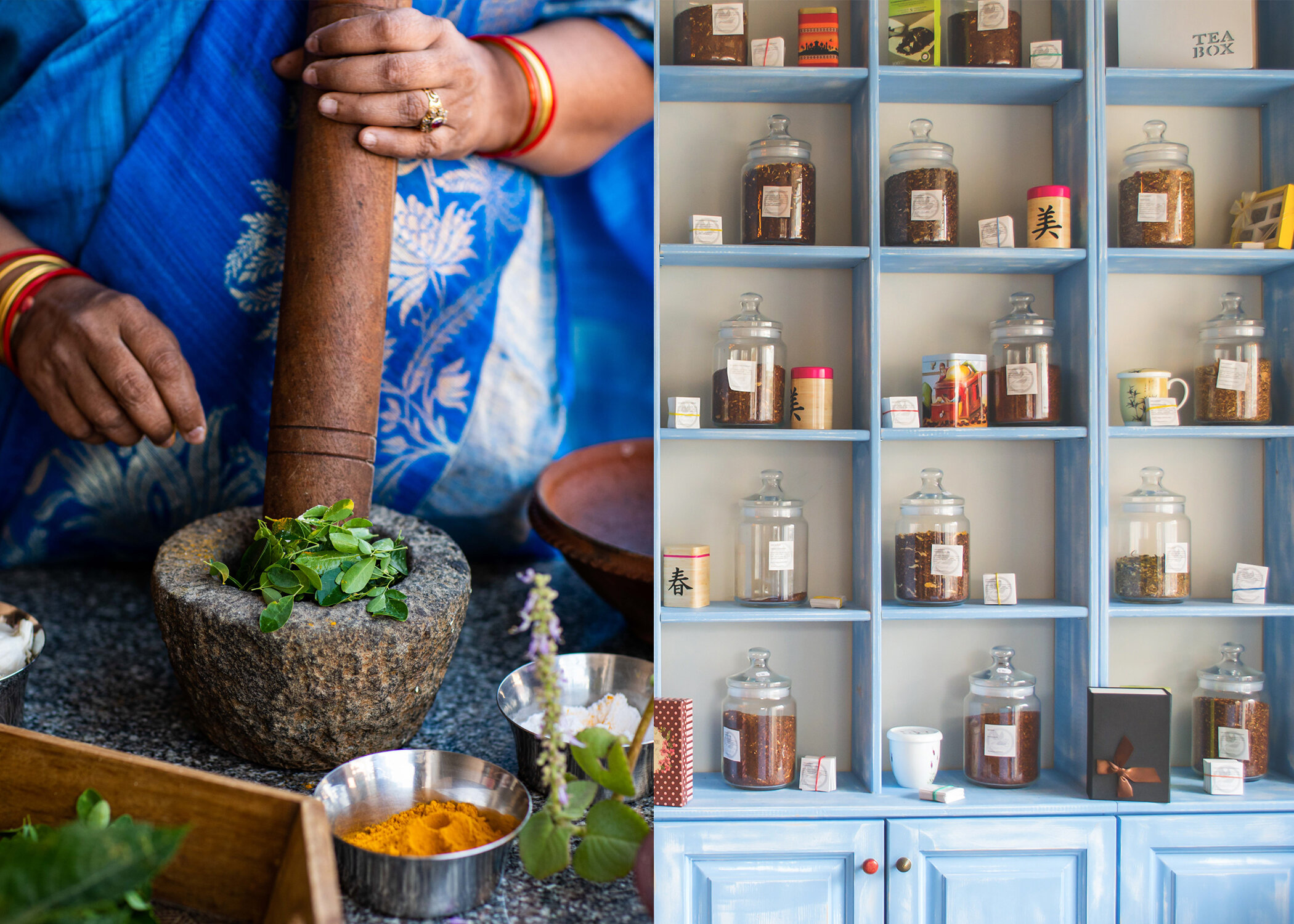WHAT AYURVEDA AND TRADITIONAL CHINESE MEDICINE HAVE IN COMMON
These days, when self-care is more important than ever thanks to our frantic pace of life, ancient wellbeing practices are rising to the mainstream in the Western world. Two ancient wellbeing systems that are seeping into many of our daily habits are Ayurveda and traditional Chinese medicine, both of which operate around similar principles.
Ayurveda, a philosophy I embrace in my everyday, originally developed orally before beginning to be transcribed in the Vedas between 3,000 and 1,000 BCE. It is still widely practised in India today, especially in Kerala and other parts of South India. Traditional Chinese medicine (AKA TCM) is believed to have been around for some 23 centuries and is also still widely practised today, in China and around the world.
Both traditions, though they use different terms and methods, are holistic wellbeing systems designed to address every aspect of our lives and bring us into balance. The philosophies focus on the individual taking care of their health in their day-to-day with life force-enhancing practices such as Qi Gong and yoga which form part of a routine that aligns with the rhythm of the day. This also includes using food, herbs, breath and intention as medicine. Many Ayurvedic and TCM practices have been proven effective by modern science. I like to think of them (as well as Tibetan and Nepalese medicine which were also developed in the Himalayas and very much influence each other) as different languages to describe the understanding of the individual and the universe as a whole. Here are some of the things they have in common.
BALANCING ACT
Both philosophies believe in balancing the body and mind through relative forces: in TCM it’s between yin and yang — the opposite forces, masculine vs. feminine, doing vs. being — and in Ayurveda it’s between the 3 Doshas, Vata, Kapha and Pitta. In both systems, this balance also involves similar concepts of Qualities: heat, damp, dry… and using their opposites to counteract any imbalances.
LIFE FORCE
In both, lines of energy connect the vital organs of our bodies and inform how well energy flows around the body. This life force is known as Qi (also spelled Chi) in TCM and Prana in Ayurveda.
INDIVIDUALISED CARE
In Western medicine, the symptoms come first, whereas in Eastern medicine practitioners look at the individual first, and the symptoms second. TCM and Ayurveda understand the role that lifestyle, environment and constitution play in our overall health, and how these factors ebb and flow. “One man’s food is another man’s poison,” so there’s no one-size-fits-all quick-fix treatment for anything.
5 ELEMENTS
Both Ayurveda and TCM break up the physical world into 5 elements, with slight differences: water, fire and earth are the same in both, but the other 2 are ether and air in Ayurveda, and metal and wood in TCM.
HEALTH BEGINS ON THE TONGUE
The tongue is one of the first ports of call for diagnosing a patient in both systems. TCM believes that the tongue’s aspect reflects the health of the liver, lung, spleen, heart, and kidney. Ayurveda assesses the health of those organs through the tongue, as well as that of the chest, neck and digestive organs. Both traditions look at colour, coating and shape of the tongue.
PULSE
Pulse is another common way that both traditions diagnose a patient. Ayurveda and TCM use an individual’s pulse to understand how energy is flowing through the body and conclude what imbalance they’re experiencing. Though pulse reading is important in both traditions, they diverge in their approach to it: the hand placement of the practitioner is different and TCM pulse reading is more immediate and diagnosis-based, while in Ayurveda the pulse serves to determine Doshic makeup and imbalances.
THE IMPORTANCE OF EATING WELL
In both Ayurveda and TCM, food and healthy digestion is the most important factor in overall health. Food is the first way to heal and prevent a range of symptoms, and it’s important to get some of each of the Tastes in our daily meals. In TCM, there are 5 Tastes, sweet, sour, salty, bitter, pungent, while Ayurveda recognises those 5 plus astringent. Contrary to many modern ideas of healthy food being raw or cold like salads — both philosophies privilege cooked, easy to digest, warming foods to nourish the mind-body.
HERBS AND SPICES
In TCM, herbs are processed and used as part of medicinal concoctions, whereas in Ayurveda they are most often cooked fresh — though Ayurveda also uses them in dried and other processed forms. Both use many different parts of plants and animals as medicinal ingredients. Ayurveda uses more spices, simply by virtue of the plants that grow on the subcontinent as opposed to those that grow in China.
MASSAGE AND BODYWORK
Both traditions use massage as a method of healing and prevention. There are many kinds of massage: Ayurveda prescribes Abhyanga and Garshana body brushing, while TCM calls for Gua Sha and Tuina, among others. Both recognise acupressure as an effective technique.

